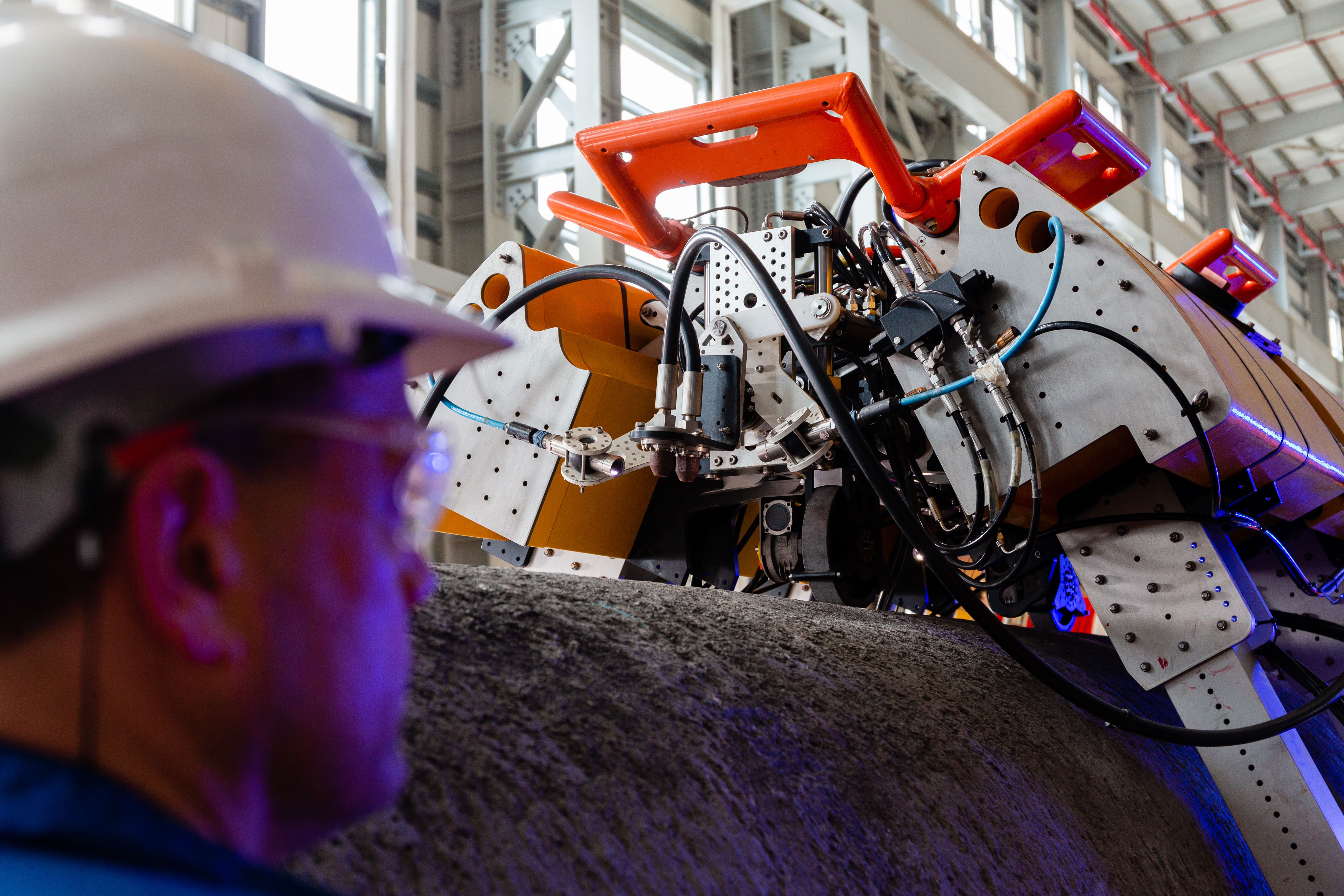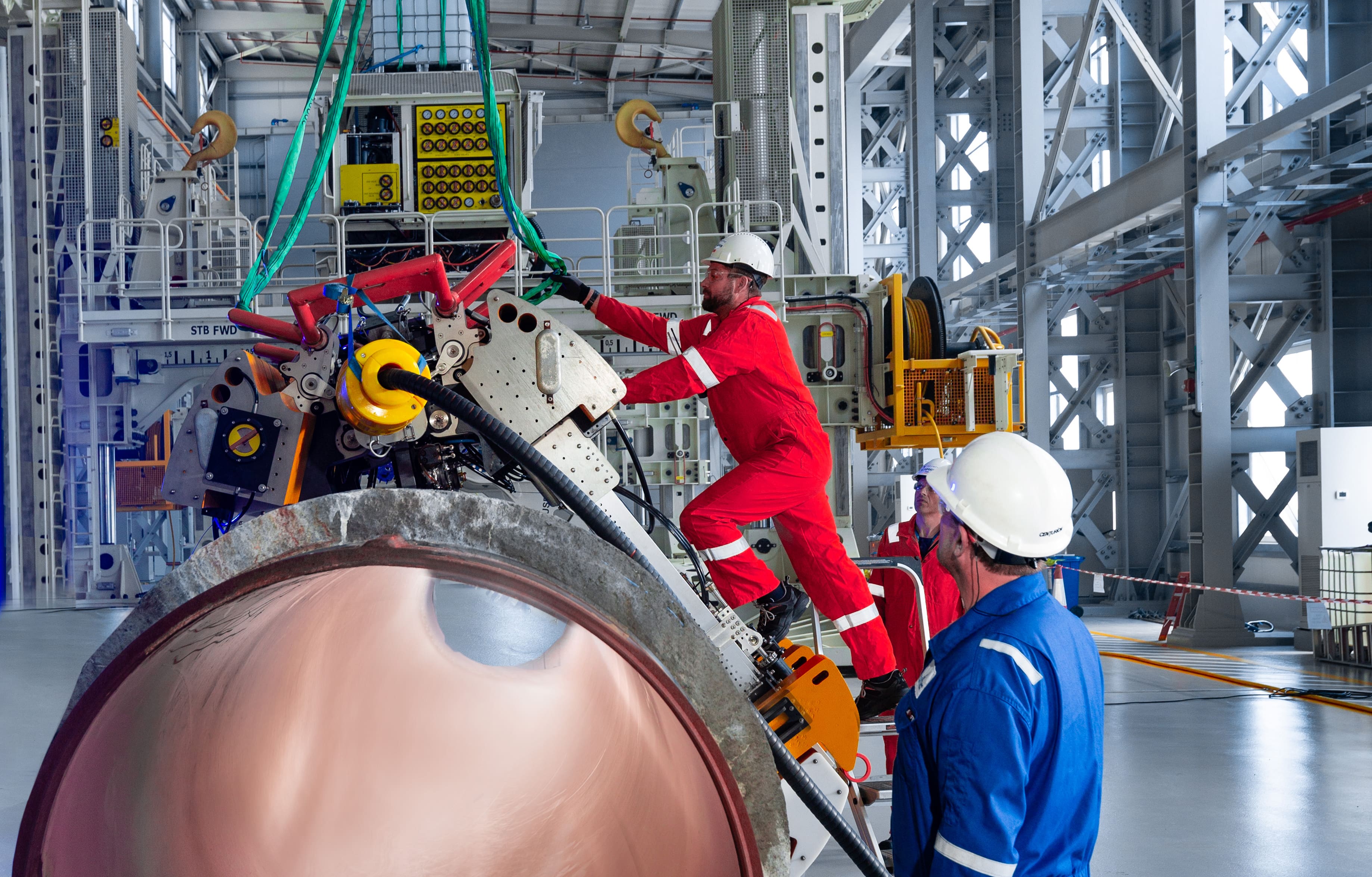ASSIST consists of three main components: Subsea Equipment, Purpose Built Facilities and Support Agreements.
Subsea Equipment: Our team, together with international contractors and partners, has developed, designed, built and tested the latest generation subsea repair technology. The result has been the development of a unique system featuring large bespoke equipment that can be utilized on pipelines ranging from 8 inches to 48 inches.
Purpose Built Facilities: A dedicated 45,000m2 marine base facility has been constructed at KEZAD (Khalifa Economic Zones Abu Dhabi) . Providing easy access to Khalifa Port, the facility houses the subsea tools and serves as the hub for all maintenance and subsea interventions.
Support Agreements: To support ASSIST, contracts and agreements have been put in place with specialized companies to provide all required support services and equipment not owned by ASSIST.


Our ASSIST pipeline repair system features a unique diverless subsea launcher & receiver that allows decommission and isolation of a flooded pipeline on the seabed. This means repairs can proceed in dry condition.
This unique approach ensures a safe work environment is created before divers are deployed. Because the design allows a flooded subsea pipeline to be dewatered, it eliminates the need to handle large quantities of seawater mixed with hydrocarbons at the receiving terminal.
Furthermore, there is a decrease in risk of damage to onshore assets such as sensitive Emergency Shutdown valves because seawater is removed from the pipeline prior to repair and start-up. This reduces exposure and risks related to corrosion.
Repair of pipeline systems can take significant durations and present serious risks because of the long lead times required for preparing and executing a repair if methods and tools are not in place and technical risks and challenges, such as an existing large diameter pipe, needs recovering to the surface for an above water tie-in.
By contrast, our ASSIST pipeline repair system can shorten the repair duration by having the necessary methods and tools ready to use, while mitigating technical risks through the ability to carry out the repair on the seabed. Moreover, hyperbaric welding repairs the pipeline back into its originally welded state and supports other final tie-in methodologies such as connectors.
If damage has been sustained on the subsea pipeline, it is decommissioned and a subsea survey is conducted. This survey provides the exact location, details the extent of the damage and how much water has entered the pipeline.
Then, a subsea construction vessel moves the equipment to the correct location. The damaged portion of the pipe is cut and concrete is removed. Once done, our diverless subsea launcher & receiver is installed, water is pushed out of the pipe and an isolation tool is inserted to create a safe environment for the divers when they start work.
A new pipeline section is tied to the existing pipeline by hyperbaric welding inside the diving habitat. This creates a dry environment that allows specialized divers to enter and work inside the habitat which is at the same pressure as the repair location.

This means that divers will be transported directly from a pressurized diving system on board a diving support vessel to the habitat as they are already in saturation. Once the divers enter the habitat they take off their diving equipment, put on their PPE and start welding the pipe on the seabed.
After the weld and inspection are completed, the equipment is recovered to the vessel. Gas supply can then restart once both damaged ends are repaired.
ASSIST can create significant economic value by being ready to repair subsea pipelines in a shorter timeframe, especially for significant trunk and transmission pipelines. A reduced repair duration will result in substantial savings by minimizing a loss in production.
To support this, ASSIST is being stored in a state of readiness. Annual maintenance and testing campaigns for all the subsea equipment have been put in place and regular drills and exercises are held regularly.
In addition, because ASSIST can also support subsea tie-ins, hot tapping, construction or expansion of new and existing subsea fields (in addition to repair) additional economic and strategic value can be derived by allowing other regional operators access to the system – subject to their requirements.
While ASSIST currently caters to mitigate the effects of a damage to our subsea pipelines, the system can also be utilized on pipelines ranging from 8 inches to 48 inches with only minor adjustments and additions.
ASSIST is poised to have a strong, positive impact on the oil and gas industry and the region across three key areas:
Asset Integrity: During a subsea repair, the new diverless subsea launcher & receiver design helps reduce exposure of the internal pipe to seawater, protecting onshore assets from being contaminated. The welded repair will also return the pipeline back to its original state, eliminating the risk of leaks through flanges or connectors.


Technical Innovation: The diverless subsea launcher & receiver design already covers 36-inch and 48-inch pipes but can be replicated for smaller sizes. The installation tool for launchers & receivers can be reused for smaller pipeline sizes, significantly reducing the investments required.
Competence Development: As our ASSIST system covers all aspects of subsea pipeline repair, it has brought together many industry subsea expert companies and operations during development. This will continue during the maintenance and operation phase of the system in Abu Dhabi, ensuring the development and retention of subsea repair competence and expertise for the local market.
ASSIST comprises the latest state-of-the-art subsea handling frames, a subsea welding habitat, subsea launchers & receivers and required support technology.

Handling Frames
Welding Habitat
Subsea Launcher & Receiver and Installation Tool
Coating Removal Tool
Topside & Subsea Ancillaries
Support Agreements